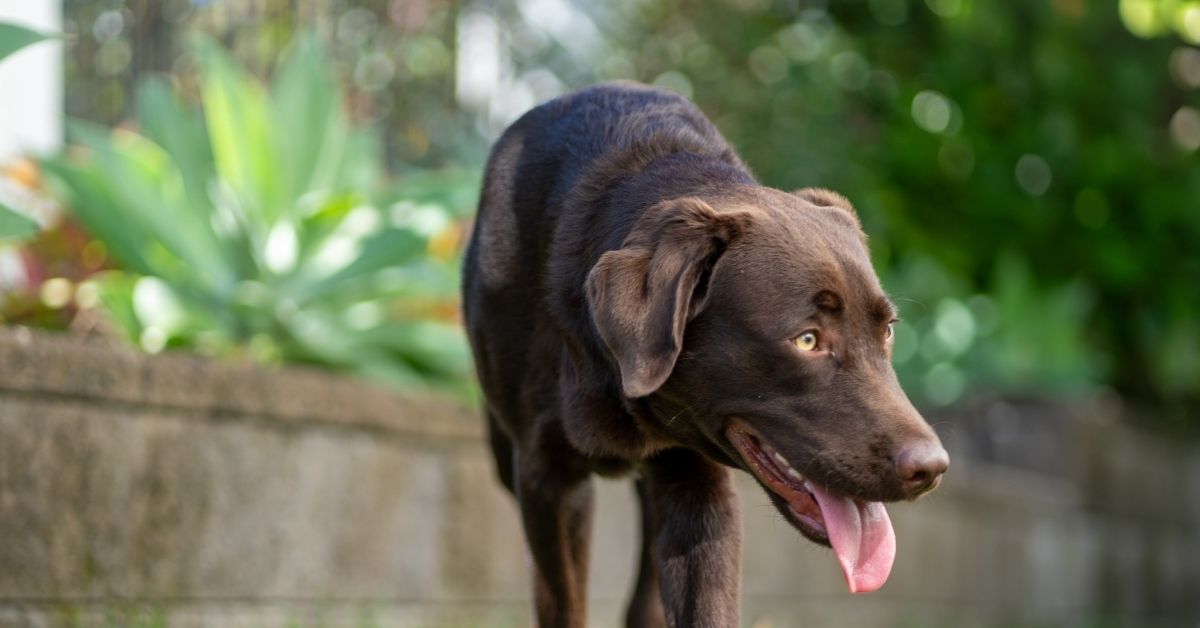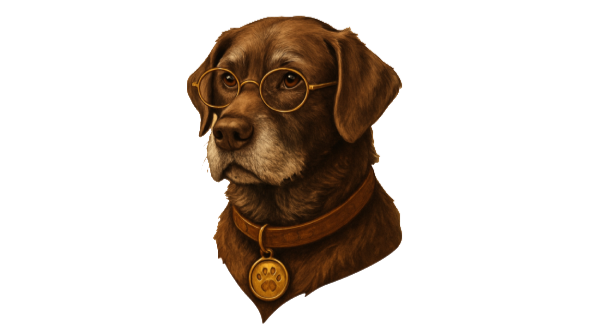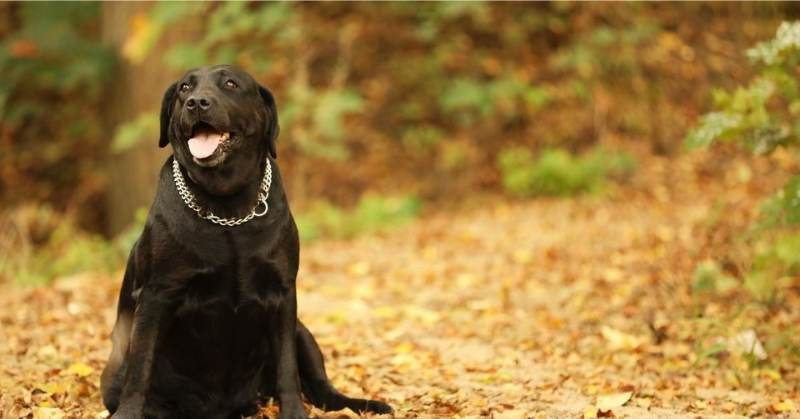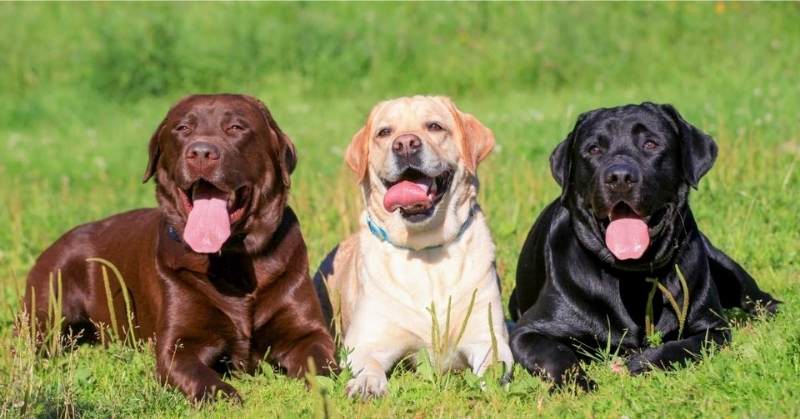
Why Do Senior Labrador Retrievers Pant So Much?
If you've noticed your senior dog panting more frequently than they used to, you're not alone in your concern. Many pet owners observe increased panting in their aging companions and wonder whether this behavior is normal or cause for alarm. While panting is a natural cooling mechanism for dogs of all ages, excessive panting in older dogs can signal various underlying issues that deserve attention and understanding.
As dogs age, their bodies undergo numerous changes that can affect their breathing patterns, temperature regulation, and overall comfort levels. Understanding why your old dog pants so much requires examining both normal age-related changes and potential health concerns that commonly affect senior pets. This comprehensive guide will help you distinguish between typical aging behaviors and symptoms that warrant veterinary attention.
Understanding Normal Panting in Dogs
Before diving into age-specific concerns, it's essential to understand why dogs pant in the first place. Unlike humans, dogs don't sweat through their skin to regulate body temperature. Instead, they rely primarily on panting as their main cooling mechanism. When a dog pants, they rapidly breathe in and out through their mouth, allowing moisture to evaporate from their tongue, mouth, and upper respiratory tract, which helps lower their body temperature.
Normal panting typically occurs after exercise, during warm weather, when a dog is excited, or in stressful situations. Healthy dogs usually pant with their mouth open, tongue hanging out, and breathing at a rate of 10 to 30 breaths per minute when at rest. The panting should subside once the dog cools down, calms down, or the stressful situation passes.
In younger dogs, panting episodes are generally short-lived and directly related to obvious triggers. However, as dogs age, the reasons for panting can become more complex and may persist longer than expected, which is why many senior dog owners become concerned about this behavior.
Age-Related Changes That Increase Panting
Senior dogs, typically those over seven years old for larger breeds and over ten years old for smaller breeds, experience various physiological changes that can contribute to increased panting. These changes are often gradual and may not be immediately noticeable until they become more pronounced.
One significant factor is the decline in cardiovascular efficiency that occurs with aging. The heart muscle may weaken over time, making it more difficult to pump blood effectively throughout the body. This reduced cardiac function means the heart must work harder to maintain adequate circulation, which can lead to increased respiratory effort and more frequent panting episodes.
Additionally, older dogs often experience changes in their metabolic rate and body composition. Many senior Labrador Retrievers tend to gain weight due to decreased activity levels and slower metabolism, while simultaneously losing muscle mass. This combination can make temperature regulation more challenging and increase the effort required for basic activities, leading to more frequent panting.
The respiratory system itself also undergoes changes with age. The lung tissue may become less elastic, and the muscles involved in breathing might weaken. These changes can reduce the efficiency of oxygen exchange and make breathing more laborious, particularly during physical activity or in warm conditions.
Common Health Conditions Causing Excessive Panting
Several health conditions that commonly affect senior dogs can lead to increased panting. Recognizing these conditions early can significantly improve your dog's quality of life and potentially extend their lifespan.
Heart Disease is one of the most serious causes of excessive panting in older dogs. Congestive heart failure, heart murmurs, and other cardiac conditions can cause fluid to build up in the lungs, making breathing difficult and labored. Dogs with heart disease often pant even when resting and may show other symptoms such as coughing, especially at night, reduced exercise tolerance, and bluish gums.
Respiratory Issues including chronic bronchitis, pneumonia, or collapsed trachea can cause persistent panting. These conditions make it harder for dogs to get adequate oxygen, forcing them to breathe more rapidly and heavily. Senior dogs are particularly susceptible to these issues due to weakened immune systems and age-related changes in lung function.
Pain and Arthritis are extremely common in older dogs and can contribute significantly to panting behavior. When dogs experience chronic pain from conditions like hip dysplasia, spinal problems, or general arthritis, they may pant as a response to discomfort. The stress of dealing with constant pain can also trigger panting episodes, even when the dog is at rest.
Endocrine Disorders such as Cushing's disease, diabetes, and hyperthyroidism can all cause excessive panting. Cushing's disease, in particular, is common in senior dogs and leads to increased cortisol production, which can cause constant panting, increased thirst and urination, and a pot-bellied appearance. Diabetes can cause panting due to dehydration and metabolic imbalances, while hyperthyroidism speeds up the metabolism, leading to increased body temperature and respiratory rate.
Obesity is increasingly common in senior dogs and significantly impacts their ability to regulate temperature and breathe efficiently. Excess weight puts additional strain on the heart and lungs, making even mild activity more taxing and leading to increased panting. Overweight dogs also have more difficulty cooling themselves due to the insulating effect of excess fat.
Medication-Related Panting
Many senior Labrador Retrievers require medications for various age-related conditions, and some of these medications can contribute to increased panting as a side effect. Corticosteroids, commonly prescribed for inflammatory conditions, arthritis, and allergies, are notorious for causing excessive panting in dogs. These medications can increase thirst, appetite, and panting behavior, particularly when used long-term.
Pain medications, particularly opioids, can affect respiratory patterns, while some heart medications may cause changes in breathing as the body adjusts to altered cardiac function. If your senior dog recently started a new medication and you've noticed increased panting, it's important to discuss this with your veterinarian. Never discontinue medications without professional guidance, but your vet may be able to adjust dosages or switch to alternative treatments that have fewer respiratory side effects.
Some dogs may also experience drug interactions if they're taking multiple medications, which is common in senior pets managing multiple health conditions. These interactions can sometimes manifest as increased panting or other respiratory changes.
Environmental and Lifestyle Factors
Senior dogs are often more sensitive to environmental changes than their younger counterparts. Temperature fluctuations that might not have bothered them in their youth can now trigger extended panting episodes. Older dogs have reduced ability to regulate their body temperature efficiently, making them more susceptible to overheating in warm weather and potentially causing compensatory panting in cooler conditions as their body works to maintain optimal temperature.
Changes in routine, moving to a new home, or the addition of new family members can cause stress-related panting in sensitive senior dogs. Cognitive dysfunction syndrome, similar to dementia in humans, affects many older dogs and can lead to increased anxiety and confusion, manifesting as excessive panting, especially during evening hours or at night.
The sleeping environment can also play a role. Senior dogs may find it more difficult to get comfortable due to arthritis or other age-related issues, leading to restless nights and increased panting. Additionally, older dogs may develop sensitivity to previously tolerated sounds, lights, or other environmental stimuli, causing stress-induced panting.
When to Be Concerned
While some increase in panting can be normal as dogs age, certain signs should prompt immediate veterinary attention. Sudden onset of severe panting, especially if accompanied by other symptoms, is always concerning. If your dog's panting is accompanied by pale or blue-tinged gums, this indicates a lack of oxygen and requires emergency veterinary care.
Panting that occurs without any apparent trigger, continues for extended periods, or seems disproportionate to the situation warrants professional evaluation. Additionally, if panting is accompanied by other symptoms such as coughing, loss of appetite, lethargy, difficulty lying down, restlessness, or collapse, these combinations suggest serious underlying health issues that need prompt attention.
Changes in the sound or pattern of panting can also be significant. If your dog's panting becomes more labored, noisy, or if they seem to struggle to catch their breath, these changes should be evaluated by a veterinarian. Similarly, if panting disrupts your dog's sleep or prevents them from settling down to rest, this level of respiratory distress needs professional assessment.
Management Strategies and Solutions
Once you've consulted with your veterinarian and identified any underlying health issues contributing to your senior dog's panting, there are several management strategies that can help improve their comfort and reduce excessive panting episodes.
Environmental modifications can make a significant difference in your older dog's comfort level. Ensuring your home maintains a comfortable temperature, providing multiple comfortable resting spots, and using fans or air conditioning during warm weather can help reduce temperature-related panting. Orthopedic beds can help arthritic dogs find more comfortable positions, potentially reducing pain-related panting.
Weight management is crucial for overweight senior dogs. Working with your veterinarian to develop an appropriate diet and exercise plan can significantly reduce the strain on your dog's cardiovascular and respiratory systems. Even modest weight loss can lead to noticeable improvements in breathing and overall comfort levels.
Pain management for dogs with arthritis or other painful conditions can dramatically reduce panting episodes. This might involve prescription pain medications, supplements like glucosamine and chondroitin, physical therapy, or alternative treatments such as acupuncture. Keeping your dog comfortable can eliminate a major trigger for excessive panting.
Medication adjustments may be necessary if current treatments are contributing to panting. Your veterinarian might be able to modify dosages, change medication timing, or switch to alternative treatments that have fewer respiratory side effects while still managing your dog's primary health conditions effectively.
Creating a Comfortable Environment
Senior dogs benefit greatly from environmental modifications that reduce stress and promote comfort. This includes maintaining consistent routines, providing quiet spaces for rest, and ensuring easy access to water and comfortable sleeping areas. Elevated food and water bowls can make eating and drinking easier for dogs with neck or back problems, potentially reducing the stress that contributes to panting.
Consider the flooring in your home as well. Slippery surfaces can be challenging and stressful for older dogs with mobility issues, so providing rugs or non-slip mats can help them move around more confidently and with less anxiety-induced panting.
Monitoring and Documentation
Keeping a record of your senior dog's panting episodes can be valuable for veterinary consultations. Note when panting occurs, how long it lasts, what activities preceded it, and any other symptoms you observe. This information can help your veterinarian identify patterns and determine the most likely causes of the excessive panting.
Temperature and humidity levels, exercise duration, medication timing, and your dog's overall behavior should all be documented. This comprehensive record can reveal triggers you might not have noticed and help guide treatment decisions.
The Importance of Regular Veterinary Care
Senior dogs should have more frequent veterinary check-ups than younger dogs, typically every six months rather than annually. These regular examinations can help identify health issues early, before they progress to the point of causing severe symptoms like excessive panting.
During these visits, discuss any changes in your dog's breathing patterns, even if they seem minor. Early intervention for heart disease, respiratory issues, or other age-related conditions can significantly improve outcomes and quality of life for your senior companion.
Conclusion
Excessive panting in senior Labrador Retrievers is a common concern that can stem from various causes, ranging from normal age-related changes to serious health conditions requiring immediate attention. While some increase in panting may be expected as dogs age, sudden changes, persistent panting without clear triggers, or panting accompanied by other symptoms should always be evaluated by a veterinarian.
Understanding the potential causes of increased panting in older dogs empowers you to make informed decisions about your pet's care and to recognize when professional intervention is necessary. With proper management, many of the conditions that cause excessive panting in senior dogs can be effectively treated or controlled, allowing your aging companion to maintain a good quality of life.
Remember that you know your dog better than anyone else. Trust your instincts when something seems different about your senior dog's behavior or breathing patterns. Early recognition and treatment of underlying health issues can make a significant difference in your dog's comfort and longevity, ensuring that their golden years are as comfortable and enjoyable as possible.
By working closely with your veterinarian, implementing appropriate environmental modifications, and staying attentive to your senior dog's changing needs, you can help manage excessive panting and ensure your beloved companion receives the care they deserve in their later years.
📸 Photo Credits: Featured images in this article are licensed from Shutterstock



